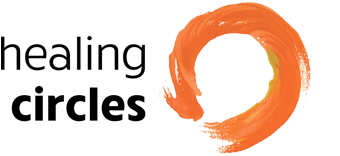Uncertainty 98249
When pulled over for speeding and asked if he knew how fast he was going, Nobel laureate Werner Heisenberg replied, “No, but I know where I am.” That joke apparently leaves freshman physics students rolling in the aisles of the lecture hall at MIT. I had to have it explained to me. It has to do with electrons. You can know either the velocity of an electron or its location, but not both. If you know one, you can only speak of the other in probabilities. It’s not a question of measurement accuracy, but a fundamental characteristic of matter. Into a mechanistic view of the universe rooted in Isaac Newton’s apple tree, Heisenberg introduced the concept of uncertainty as a scientific principle. Chance. Caprice. Crumbled cookie.
This same principle comes into consideration when planning the course of a radiation treatment. Blanket the area where the cancer might be going? Or focus precisely on the area where it definitely is? Not an easy choice. Radiological oncology may hail from the ivory tower of academic pursuit, but it deals in the underworld of trade-offs, guesses, and gambles. Sometimes it comes up sevens and elevens; sometimes snake-eyes.
“That was outside the area we treated,” the radiologist told us, pointing at a small undistinguished maybe-something that appeared on Diana’s scan nine months after the highly targeted stereotactic treatment. “We got everything in the target region.”
And that may even be true. But it hardly mattered.
“We won’t know if it’s anything for a couple of months when we take another scan,” continued the radiologist. “How comfortable are you with uncertainty?”
We were relatively unfazed by this news, and that surprised us more than the appearance of the blot on the scan. But this was no longer foreign territory. We had been here before. We knew the customs. We knew the language. We knew what to expect. I wasn’t comforted by that, but I wasn’t discomfited, either. That didn’t mean I was a fatalist. Or a realist, for that matter. I think I was an uncertainist, but that had been a relatively recent development.
I have historically been uneasy with ambiguity. That probably stems from my Presbyterian upbringing with our 1) collective belief in predestination, and 2) absolute confusion about whatever that means. In a nutshell to my adolescent ears: maybe damned if you do, maybe damned if you don’t, maybe damned even if you forgot the question. God knows ahead of time (that’s the “pre” part) but I won’t find out until it’s too late (that’s the “destination” part). That is uncertainty at its most definite. As if my brain at the time wasn’t addled enough by hormones.
Consequently—or maybe coincidentally—I have always felt more comfortable once I knew the lay of the land. If I could have only one of the ten essentials of wilderness travel, I’d choose the map every time. I’d rather find myself up the creek than in the dark. So, here we were in late June of 2008, back in the doctor’s office facing the possibility that Diana’s second primary cancer in 12 years was growing for the third time. Why was I not reacting badly? I think because, by that time, I’d finally pieced together that when it comes to the terrain of cancer, uncertainty is the lay of the land.
Our oncologist suggested, “Let’s wait and see what the next scan tells us. Just put it out of your mind until then.” So, naturally, what had been an insignificant little blur on a CT scan became a high-resolution image of something the size of a small moon. And then we saw it for what it really was: an opportunity.
For Diana and me, the little smudge rematerialized as a focal point, a point of departure, a course correction. Unlike Heisenberg and his electrons, we knew neither where we were nor where we were going. You might think that would be a disadvantage, but it was surprisingly liberating. What we did know was where we’d been. Since the radiation treatment nine months before, we had resolutely and exclusively stayed the course charted by Western medicine. But it hadn’t felt right. It was time to recalibrate our compass. Diana would continue to spend two seconds of each day swallowing the targeted chemo pill because, well, why not? And for that very same reason, we’d devote the rest of our waking hours to exploring the ancient and anecdotal avenues of the Far Elsewhere.
So, to answer the radiologist’s question about how comfortable we had become with uncertainty: Very. We listed it as our home address on the last census. We had come for the cancer but stayed for the climate. Uncertainty is a thriving and supportive expat community open to those of any former persuasion. We’ll likely retire here. So whenever any card-carrying residents of Certainty inadvertently wander through, well, I may or may not entertain them, but I will try my best to humor them.
Header from maps.google.com




